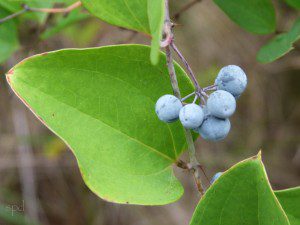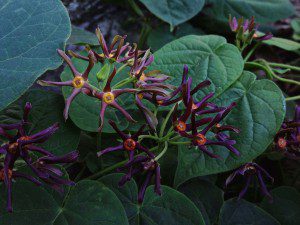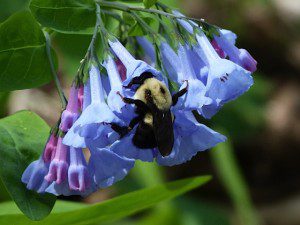Plant Profiles
Plant Profile: Horseweed, Conyza canadensis
The common name may refer to the size of this plant, a robust, coarse summer annual in the Aster Family. Horseweed grows 1 to 6 feet tall on a stout stem often covered with long white hairs. There are a lot of narrow leaves crowded on the stem, which becomes branched near the top. …
Read MoreSecond Annual Poison Ivy Day
You didn’t know? Well, it’s true. April 1, 2015 is officially the Second Annual Poison Ivy Day. You missed the first Annual PI Day? For goodness sake, you need to pay closer attention! Virginia is the pioneer state on this one, but we are pretty sure others will be following our lead by next year. California…
Read MoreMeet The Witch Grasses!
Grasses are often overlooked and dismissed as difficult to identify – too technical and cryptic. No wonder, then, that the enigmatic witch grasses (genus Dichanthelium) have really gotten the short end of the stick. It is at least worth your while to know that these little grasses are quite successful and diverse. Most habitats in…
Read MoreSmile – It’s A Smilax!
The genus Smilax is bound to catch your attention one way or another – your eye catches a distinctive green leaf; your nose detects a whiff of something slightly ‘off;’ your skin or clothes catch on sharp prickles as you walk down the trail. Those prickly Simlax have common names that include the words Greenbrier or…
Read MoreCoastal Barnyard Grass
Fall is a great time of year for grass ID! Echinochloa walteri, member of the Poaceae family, is an annual herb that can reach six feet. According to the the Flora of Virginia it is frequent to common in the estuarine and maritime zones of the Virginia’s Coastal Plain. The flowers are only a few…
Read MoreAsclepias Tuberosa, the Butterfly Queen
How did such a lovely plant come by so many spurious common names? Poor Asclepias tuberosa. Known by many as butterfly weed, but some of its alternative common names are even worse than that. Pleurisy root, for example. Indigenous peoples once chewed its tough taproot to cure pulmonary ailments, presumably it had a more enticing…
Read MoreMatelea obliqua: Climbing Milkweed
Did you know that monarchs are not the only caterpillars that feed exclusively on milkweeds? From our guest blogger and photographer, Fritz Flohr Reynolds: Matelea obliqua, climbing or oblique milkweed, is a perennial herbaceous vine native to the eastern United States. Its range includes Washington D.C., as well as parts of Maryland and Virginia, including…
Read MoreThree Cheers for Ninebark: Physocarpus opulifolius
Ninebark, a native shrub with an intriguing name, is a plant worth getting to know. Its many attributes include an abundant flowering habit which is currently being exhibited in Virginia. The city of Alexandria put some native plantings in new park at the base of the Woodrow Wilson Bridge three springs ago. Last week a…
Read MoreSpring Ephemerals: Catch ’em While You Can
April is perhaps the very best month in Virginia to catch a sight of these extraordinary flowers that grace the landscape for such a brief time. To be ephemeral is to be short-lived, fleeting, brief. Bluebells, merrybells, Dutchman’s breeches, squirrel corn, trilliums, lady slipper orchids, bloodroot, hepatica, trout lily, twinleaf and toothwort; even their names…
Read More



